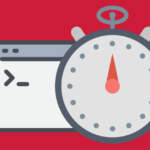Screen, that is, the virtual consoles in Debian systems and Centos
Screen, ie the virtual console.
Working on Linux, there are situations, in which the user after logging in and starting the program, He would like to continue to work even if it will be necessary to log out. Implementation of the program / script continues after the close of the session allows the user screen command, which creates in the system “virtual” terminal, which keeps an instance of logged-in user, and what is associated with it included in the scripts, programs.
We install the program with the command:
1 | apt-get install screen -y |
Centos:
1 | yum install screen |
Some useful commands, m.in. launch of a new console:
1 | screen -S nazwa_konsoli |
List of running console:
1 | screen -ls |
The transition to an existing console:
1 | screen -r nazwa_konsoli/PID |
The transition to the existing if there, otherwise, creates a new:
1 | screen -R nazwa_konsoli |
Running the command console "in the background":
1 | screen -dmS nazwa_konsoli polecenie |
Output / close the Console:
1 | exit |
If we want to get out of the virtual console, but leave it to continue the work we are doing is using the CTRL + A and then Ctrl + D.





